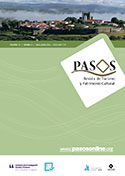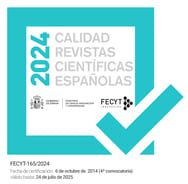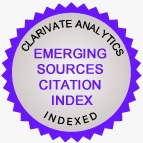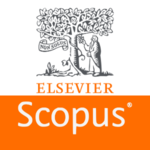Regional gastronomic festivals. Two case studies in Argentina: Keipon Fest and Fiesta de la Miel
DOI:
https://doi.org/10.25145/j.pasos.2025.23.031Keywords:
Regional festivals, Gastronomic tourism, Rural tourism, Local actors, ArgentinaAbstract
In the last 15 years, various public and private initiatives in Argentina have promoted the recovery and commercialisation of food products linked to its geography. These practices generate unequal dynamics of selection and production, mobilising actors and discourses in unpredictable ways. This study compares two regional festivals: the Keipon Fest in Chubut and the Regional Honey Festival in Buenos Aires, analysing their 2022 and 2023 editions. The objective is to identify strategies of state agents and local producers to highlight and communicate key products of the regional economy, observing continuities and changes. Through participant observation and semi-structured interviews, it was detected that competition and mutual inspiration between localities has driven the renewal of these events, consolidating their role in tourism and productive development. In addition to recovering historical elements, the festivities have served as platforms to discuss current issues and reinforce material and symbolic links in their communities.
Downloads
Publication Facts
Reviewer profiles N/A
Author statements
- Academic society
- PASOS. Revista de Turismo y Patrimonio Cultural
- Publisher
- Instituto Universitario de Investigación Social y Turismo. Universidad de La Laguna (España) - Instituto Universitario da Maia ISMAI (Portugal)
References
Aguirre, P. (1999). Toda la carne al asador. Todo es Historia, 380, 80-93.
Álvarez, M. (2002). La cocina como patrimonio (In) tangible. En Primeras Jornadas del patrimonio gastronómico. Comisión para preservación del patrimonio histórico cultural de la ciudad de Buenos Aires. Gobierno de la Ciudad de Buenos Aires.
Álvarez, M. & Sammartino, G. (2009). Empanadas, tamales y carpaccio de llama: patrimonio alimentario y turismo en la Quebrada de Humahuaca-Argentina. Estudios y perspectivas en turismo, 18, 161-175. https://www.redalyc.org/pdf/1807/180714240004.pdf
Arias, IR. (2020). Conexión de la gastronomía con los eventos culturales en Bogotá. Sosquua. Revista Especializada en Gastronomía 2(1), 37-47. https://cipres.sanmateo.edu.co/ojs/index.php/sosquua/article/view/137
Arzeno, M. y Troncoso, C. (2012). Alimentos tradicionales andinos, turismo y lugar: definiendo la nueva geografía de la Quebrada de Humahuaca (Argentina). Revista de Geografía Norte Grande, 52, 71-90. https://revistanortegrande.uc.cl/index.php/RGNG/article/view/41687
Bak-Geller Corona, S. & Matta, R. (2020). Las cocinas mestizas en México y Perú. Claves para interpretar el multiculturalismo en América Latina. Antípoda. Revista de Antropología y Arqueología, 39, 69-93. https://revistas.uniandes.edu.co/index.php/antipoda/article/view/2113
Blacha, L., & Galmarini, M. R. (2020). El turismo rural en Lobos (Argentina): Desarrollo local en el proceso agroalimentario. PASOS Revista De Turismo Y Patrimonio Cultural, 18(2), 265–277. https://doi.org/10.25145/j.pasos.2020.18.018
Censo Nacional Argentino de Población, Hogares y Viviendas (2010). https://www.indec.gob.ar/indec/web/Nivel4-Tema-2-41-135
Censo Nacional Argentino de Población, Hogares y Viviendas 2022. https://censo.gob.ar/index.php/censo-2022-resultados-provisorios/
Coronato, F. (2014). ¡Ovejas eran las de Gales! Los colonos galeses y la ganadería ovina. Los galeses en la Patagonia, VI(6), 33-51.
Cuba, X. (2020). Turismo gastronómico en Perú roles de agentes involucrados. Revista Científica Investigación Andina 19(2): 102-109. https://www.revistas.uancv.edu.pe/index.php/RCIA/article/view/801/694
Epifanio, H. (2001). San Vicente, un pueblo, un partido (1780-1928). Bahía Graf.
Fornari, R. (2011). La Cooperativa de Trabajadores Rurales de San Vicente: una experiencia organizativa. Facultad Latinoamericana de Ciencias Sociales.
Garavaglia, J. C. (1997). De ‘mingas’ y ‘convites’: la reciprocidad campesina entre los paisanos rioplatenses. Anuario del IEHS, 12, 131–139. http://anuarioiehs.unicen.edu.ar/1997.html
Marcos, M., Chiara, C., & Camila, C. (2019). El crecimiento de la población de la Región Metropolitana de Buenos Aires (2001-2010): componentes, especificidades territoriales y procesos urbanos. Revista Latinoamericana de Población, 23(24), 106–134. https://revistarelap.org/index.php/relap/article/view/67
Matta, R. (2016). Food incursions into global heritage: Peruvian cuisine's slippery road to UNESCO. Social Anthropology, 24(3), 338-352.
Olsen, J. F. (2019). Cocina, nación e identidades: Un abordaje histórico-antropológico sobre la emergencia de narrativas culinarias nacionalistas en Buenos Aires (Argentina) durante la segunda mitad del Siglo XIX. Tesis de grado. Disponible en: http://repositorio.filo.uba.ar/handle/filodigital/12104
Pérez Álvarez, G. (2019) Una mirada de largo plazo a la relación entre clase obrera y desarrollo capitalista en la Patagonia Argentina: el noreste de Chubut entre 1865 y el siglo XXI. REMS, 12, 68–95. https://estudiosmaritimossociales.org/rems/rems15/perez-alvarez.pdf
Pérez Winter, C. (2019). El “retorno al campo” desde la mirada local. Redescubriendo los atractivos patrimoniales pampeano ‑bonaerenses (Argentina). PASOS. Revista de Turismo y Patrimonio Cultural, 17(4), 779-793. https://ojsull.webs.ull.es/index.php/Revista/article/view/1725
Pérez Winter, C. (2021). Procesos turístico-patrimoniales en la Fiesta Provincial del Dulce de Leche en Cañuelas, Argentina. Revista RIVAR, 8(23), 153-170. https://revistarivar.cl/images/vol8-n23/art09.pdf
Roigé, X., del Mármol, C., & Guil, M. (2019). Los usos del patrimonio inmaterial en la promoción del turismo. El caso del Pirineo catalán. PASOS. Revista de Turismo y Patrimonio Cultural, 17(6), 1113-1129. https://doi.org/10.25145/j .pasos.2019.17.077
Rossi, C. O. (1993). Desarrollo endógeno del municipio de San Vicente. Apicultura. Análisis de la actividad apícola en el Partido de San Vicente - Prov. De Buenos Aires. Informe final.
Sanmartino, G. (2021). Patrimonio alimentario ¿bueno para quién? En Benza, S. y G. Sanmartino (Comp.), Alimentación, cultura y nutrición. Aportes desde el patrimonio, las políticas públicas y el abordaje de los padecimientos (pp. 16-23). Libro digital, DOC.
Santos, V. y da Silva, F. (2021). Eventos gastronômicos: um estudo de caso sobre o festival de Queijo Coalho De Jaguaribe-Ceará. Conexões-Ciência e Tecnologia 15, 1-7. DOI https:// doi.org/10.21439/conexoes.v15i0.1253
Santos Díaz, J. y López Guevara, V. (2022). Eventos turísticos basados en patrimonio alimentario: un estado de conocimiento para Latinoamérica. RIVAR, 9(26), 72-88. https://www.revistas.usach.cl/ojs/index.php/rivar/article/view/5522
Scribano, Ad. (2011). Algunas aproximaciones conceptuales a las experiencias Festivas. Onteaikén, 12, 9-19. http://onteaiken.com.ar/ver/boletin12/1-1.pdf
Troncoso, C. y Arzeno, M. (2020). Polos, ferias y mercados: geografía del consumo gastronómico en Buenos Aires (Argentina). Revista Universitaria de Geografía, 29(2), 95-13. https://revistas.uns.edu.ar/rug/article/view/4056
Zusman, P. y Perez Winter, C. 2018. Capítulo 9: Las áreas rurales y el patrimonio histórico – cultural. En H. Castro y M. Arzeno (Coord.), Lo rural en redefinición. Aproximaciones y estrategias desde la Geografía (pp. 231‑252). Editorial Biblos.
Downloads
Published
How to Cite
Issue
Section
License
Copyright (c) 2024 Juan Francisco Olsen, Miriam Noemí Vommaro

This work is licensed under a Creative Commons Attribution-NonCommercial-NoDerivatives 4.0 International License.
I confirm that the work is original (of my/our authorship), and that it will not be submitted to other journals or publications until the final resolution of the review process in PASOS, RTPC.
I authorize the publication of my work by PASOS, PSTN of free and open access in any of the formats that I deem appropriate, for an indefinite period of time and as a non-remunerated collaboration.
Likewise, the author(s) understands that the published work may be linked or deposited on any server or included in other publications (republication), provided that the new place and/or new edition references the original publication and acknowledges the authorship and copyright ownership of PASOS RTPC publications.
Authors understand that a plagiarism-self-plagiarism check will be performed, and the article may be removed at any time from the editorial flow.










